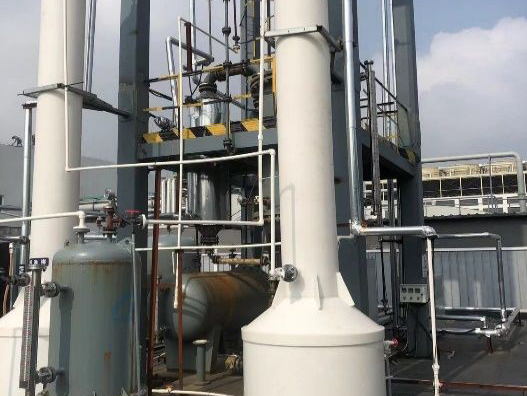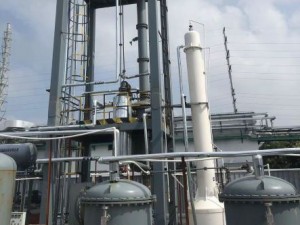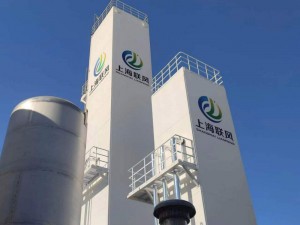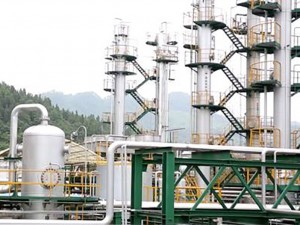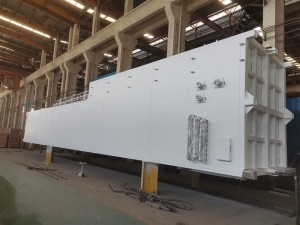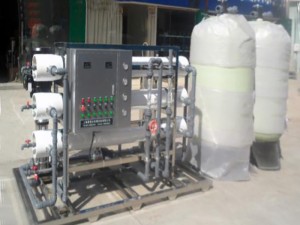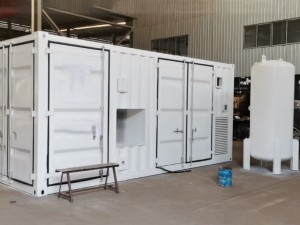
Waste Acid Recovery Unit

• Processes, distills, separates, and recycles large volumes of waste acid generated by the customer's upstream operations, reducing production costs.
• Properly treats remaining effluent and solid residues, achieving a water recovery rates rates in excess of 75%.
• Ensures effluent discharge meets relevant national standards, reducing effluent costs by over 60%.
• Dual column atmospheric pressure continuous distillation technology maximises the recovery of hydrofluoric acid by separating and purifying it in two rectification columns. Atmospheric pressure operation enhances safety and stability, allows more cost-effective equipment selection and reduces overall costs.
• Advanced DCS computer control technology and distillation tower waste heat recovery technology enable integrated control from central, machine and local stations, effectively monitoring the entire recovery process. The control system offers advanced and reliable design, high cost effectiveness and improved energy efficiency.
• The water treatment and regeneration module uses regenerative adsorption resin treatment, providing high adsorption efficiency, easy stripping and regeneration, high water recovery efficiency, convenient energy-saving operation, and long service life.

• Shanghai LifenGas has deep roots in the photovoltaic industry and has evolved alongside it. Through extensive research, we've identified a significant challenge faced by photovoltaic manufacturers: the need for large quantities of mixed hydrofluoric and nitric acids in cleaning processes, which results in substantial amounts of fluoride-containing acid wastewater. This waste treatment has been a persistent pain point for the industry.
• To address this issue, Shanghai LifenGas has developed an innovative waste acid recovery facility. This technology recovers valuable acids, particularly high quality hydrofluoric acid, from waste streams. This enables us to recycle resources and significantly reduce production costs for photovoltaic companies.
• Our breakthrough in recycling waste hydrofluoric acid represents a major technological advance. It uses a sophisticated process of cleaning, purifying and remixing to convert waste hydrofluoric acid into a valuable raw material. This innovation facilitates the circulation of fluorine elements throughout the photovoltaic industry's supply chain, maximising the use of fluorine resources.
• By implementing this technology, we're not only solving a critical environmental challenge, but also improving the efficiency and sustainability of the photovoltaic manufacturing process.


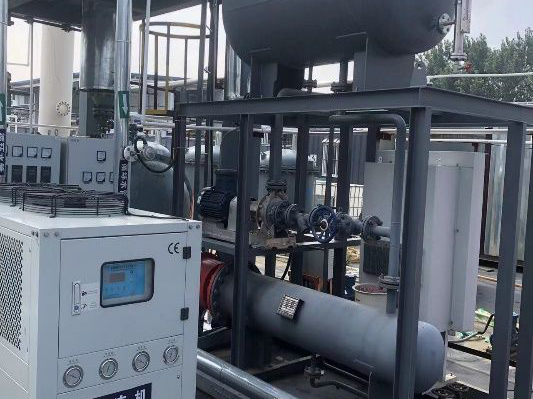
• Recoverability: Waste acid has potential value if its hydrofluoric acid content is ≥4%.
• Recovery rate: Process recovery >75%; total recovery >50% (excluding process loss and dilute acid discharge).
• Quality index: Recovered and purified products meet the high purity requirements specified in GB/T31369-2015 "Electronic Grade Hydrofluoric Acid for Solar Cells".
• Technology Source: Innovative technology developed entirely by Shanghai LifenGas, from small-scale testing to large-scale engineering design, trial production and verification, with upstream customer quality certification.
This waste acid recovery plant uses distillation separation, a well-established technology. Shanghai LifenGas uses its extensive theoretical knowledge and rich experience to select the most appropriate technical approach and adapt it to the customer's needs. Compared with other separation methods with various limitations, distillation separation is more widely applicable, reliable and technically easier to manage.
This process technology can achieve
- Over 80% recovery of hydrofluoric acid, hydrochloric acid and nitric acid
- Over 75% water recovery
- Over 60% reduction in waste water costs.
For a 10GW photovoltaic cell factory, this can result in annual cost savings of 40 million yuan, or more than 5.5 million US dollars. The recycling of waste acid not only reduces costs for customers, but also solves waste water and residue discharge problems, allowing customers to focus on production without environmental concerns.


